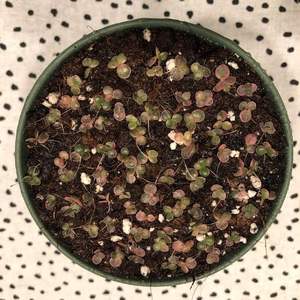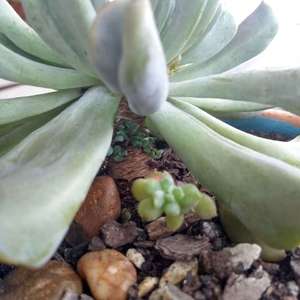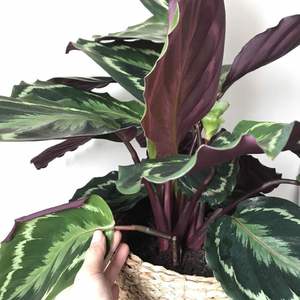文章
ritau
2020年03月31日

There are many plants that can be regrown indoors, which is very convenient for green hands to try gardening. Today, we are going to introduce 7 kinds of plants to you to regrow in water. Let’s take a look!
1.Carrots Greens

Instead of defaulting to the compost, use carrot tops to grow healthy carrot greens. Place a carrot top or tops in a bowl, cut side down. Fill the bowl with about an inch of water so the top is halfway covered. Place the dish in a sunny windowsill and change the water every day.
The tops will eventually sprout shoots. When they do, plant the tops in soil, careful not to cover the shoots. Harvest the greens to taste. (Some people prefer the baby greens; others prefer them fully grown.)
(Instructions via Gardening Know-How)
2.Green Onion

Instead of tossing the green part of these veggies, use them to grow more. Place the greens in a cup or recycled jar filled with water. Put the cup or jar on a windowsill and change the water every other day. In about a week, you should have a new green onion, leek, and/or scallion to add to your supper. Harvest when fullygrown—just make sure to leave the roots in the water.
(Instructions via Living Green Magazine)
3.Bok Choy

Cut off the base of a bok choy plant and place it in a bowl bottom-down. Add a small amount of water in the bowl. Cover the whole base with water, but do not add more than 1/4 inch above the base. Replace water every few days. In about one week, you should see regrowth around the center of the base.
Once you see regrowth, transfer the plant to a container or garden. Cover everything except the new growth with soil. Your bok choy should be full grown and ready to harvest in approximately five months.
(Instructions via My Heart Beets)
4.Celery

Rinse off the base of a bunch of celery and place it in a small bowl or similar container (any wide-mouthed, glass, or ceramic container should do). Fill the container with warm water, cut stalks facing upright. Place the bowl in a sunny area. Leave the base as-is for about one week and change the water every other day. Use a spray bottle to gently mist the plant every other day. The tiny yellow leaves around the center of the base will grow thicker and turn dark green.
After five to seven days, move the celery base to a planter or garden and cover it with soil, leaving the leaf tips uncovered. Keep the plant well watered. You’ll soon notice celery leaves regenerate from the base, as well as a few small stalks. Harvest when fully grown, then repeat the process.
(Instructions via 17 Apart)
5.Romaine Lettuce

When you chop up hearts of romaine, set aside a few inches from the bottom of the heart. Place in a bowl with about a ½ inch of water. Keep the bowl in a sunny area and change the water every day.
In a few days, you’ll start to notice sprouts. Plant the sprouted hearts directly in the garden. If you like the taste of baby greens, you can pinch off outer leaves as the lettuce grows. Otherwise, harvest romaine when it’s around 6 to 8 inches tall. If you want to continue growing lettuce, cut the romaine heads off right above the soil line with a sharp knife, leaving the base and root system intact. Otherwise, uproot the whole plant.
(Instructions via Lifehacker)
6.Lemongrass

A frequent component of Thai dishes, lemongrass is a great addition to marinades, stir-fries, spice rubs, and curry pastes. To grow your own from scraps, cut off the tops of a bunch of lemongrass and place the stalks in water. Change the water every few days. In approximately two or three weeks, you should see new roots.
When the stems have developed strong root growth, plant the stalks in a pot or garden (preferably in an area that receives lots of sun). Because lemongrass needs to stay warm year round, plant the stalks in a container that can be moved inside during the winter months. Harvest lemongrass once it reaches one foot in height; just cut off the amount you need, being careful not to uproot the plant.
(Instructions via Suited to the Seasons)
7.Garlic Sprout

While you may not be able to grow garlic bulbs, you can grow garlic sprouts—also known as garlic greens—from a clove or bulb. Place a budding clove (or even a whole bulb) in a small cup, bowl, or jar. Add water until it covers the bottom of the container and touches the bottom of the cloves. Be careful not to submerge the cloves in order to avoid rot. Change the water every other day and place in a sunny area.
After a few days, the clove or bulb will start to produce roots. Sprouts may grow as long as 10 inches, but snip off the greens once they’re around 3 inches tall. Just be sure not to remove more than one-third of each sprout at one time. They’re tasty on top of baked potatoes, salads, in dips, or as a simple garnish.
(Instructions via Simple Daily Recipes)
Hope you can enjoy your harvest!
1.Carrots Greens

Instead of defaulting to the compost, use carrot tops to grow healthy carrot greens. Place a carrot top or tops in a bowl, cut side down. Fill the bowl with about an inch of water so the top is halfway covered. Place the dish in a sunny windowsill and change the water every day.
The tops will eventually sprout shoots. When they do, plant the tops in soil, careful not to cover the shoots. Harvest the greens to taste. (Some people prefer the baby greens; others prefer them fully grown.)
(Instructions via Gardening Know-How)
2.Green Onion

Instead of tossing the green part of these veggies, use them to grow more. Place the greens in a cup or recycled jar filled with water. Put the cup or jar on a windowsill and change the water every other day. In about a week, you should have a new green onion, leek, and/or scallion to add to your supper. Harvest when fullygrown—just make sure to leave the roots in the water.
(Instructions via Living Green Magazine)
3.Bok Choy

Cut off the base of a bok choy plant and place it in a bowl bottom-down. Add a small amount of water in the bowl. Cover the whole base with water, but do not add more than 1/4 inch above the base. Replace water every few days. In about one week, you should see regrowth around the center of the base.
Once you see regrowth, transfer the plant to a container or garden. Cover everything except the new growth with soil. Your bok choy should be full grown and ready to harvest in approximately five months.
(Instructions via My Heart Beets)
4.Celery

Rinse off the base of a bunch of celery and place it in a small bowl or similar container (any wide-mouthed, glass, or ceramic container should do). Fill the container with warm water, cut stalks facing upright. Place the bowl in a sunny area. Leave the base as-is for about one week and change the water every other day. Use a spray bottle to gently mist the plant every other day. The tiny yellow leaves around the center of the base will grow thicker and turn dark green.
After five to seven days, move the celery base to a planter or garden and cover it with soil, leaving the leaf tips uncovered. Keep the plant well watered. You’ll soon notice celery leaves regenerate from the base, as well as a few small stalks. Harvest when fully grown, then repeat the process.
(Instructions via 17 Apart)
5.Romaine Lettuce

When you chop up hearts of romaine, set aside a few inches from the bottom of the heart. Place in a bowl with about a ½ inch of water. Keep the bowl in a sunny area and change the water every day.
In a few days, you’ll start to notice sprouts. Plant the sprouted hearts directly in the garden. If you like the taste of baby greens, you can pinch off outer leaves as the lettuce grows. Otherwise, harvest romaine when it’s around 6 to 8 inches tall. If you want to continue growing lettuce, cut the romaine heads off right above the soil line with a sharp knife, leaving the base and root system intact. Otherwise, uproot the whole plant.
(Instructions via Lifehacker)
6.Lemongrass

A frequent component of Thai dishes, lemongrass is a great addition to marinades, stir-fries, spice rubs, and curry pastes. To grow your own from scraps, cut off the tops of a bunch of lemongrass and place the stalks in water. Change the water every few days. In approximately two or three weeks, you should see new roots.
When the stems have developed strong root growth, plant the stalks in a pot or garden (preferably in an area that receives lots of sun). Because lemongrass needs to stay warm year round, plant the stalks in a container that can be moved inside during the winter months. Harvest lemongrass once it reaches one foot in height; just cut off the amount you need, being careful not to uproot the plant.
(Instructions via Suited to the Seasons)
7.Garlic Sprout

While you may not be able to grow garlic bulbs, you can grow garlic sprouts—also known as garlic greens—from a clove or bulb. Place a budding clove (or even a whole bulb) in a small cup, bowl, or jar. Add water until it covers the bottom of the container and touches the bottom of the cloves. Be careful not to submerge the cloves in order to avoid rot. Change the water every other day and place in a sunny area.
After a few days, the clove or bulb will start to produce roots. Sprouts may grow as long as 10 inches, but snip off the greens once they’re around 3 inches tall. Just be sure not to remove more than one-third of each sprout at one time. They’re tasty on top of baked potatoes, salads, in dips, or as a simple garnish.
(Instructions via Simple Daily Recipes)
Hope you can enjoy your harvest!
0
0
文章
ritau
2020年03月26日

Lilies are genus of herbaceous flowering plants growing from bulbs, all with large prominent flowers. Lilies are a group of flowering plants which are important in culture and literature in much of the world. Most species are native to the temperate northern hemisphere, though their range extends into the northern subtropics. Many other plants have "lily" in their common name but are not related to true lilies.

Lilies are tall perennials ranging in height from 2–6 ft (60–180 cm). They form naked or tunicless scaly underground bulbs which are their organs of perennation. In some North American species the base of the bulb develops into rhizomes, on which numerous small bulbs are found. Some species develop stolons. Most bulbs are buried deep in the ground, but a few species form bulbs near the soil surface. Many species form stem-roots. With these, the bulb grows naturally at some depth in the soil, and each year the new stem puts out adventitious roots above the bulb as it emerges from the soil. These roots are in addition to the basal roots that develop at the base of the bulb.
The flowers are large, often fragrant, and come in a wide range of colors including whites, yellows, oranges, pinks, reds and purples. Markings include spots and brush strokes. The plants are late spring- or summer-flowering. Flowers are borne in racemes or umbels at the tip of the stem, with six tepals spreading or reflexed, to give flowers varying from funnel shape to a "Turk's cap". The tepals are free from each other, and bear a nectary at the base of each flower. The ovary is 'superior', borne above the point of attachment of the anthers. The fruit is a three-celled capsule.

Many species are widely grown in the garden in temperate and sub-tropical regions. They may also be grown as potted plants. Numerous ornamental hybrids have been developed. They can be used in herbaceous borders, woodland and shrub plantings, and as patio plants. Some lilies, especially Lilium longiflorum, form important cut flower crops. These may be forced for particular markets; for instance, Lilium longiflorum for the Easter trade, when it may be called the Easter lily.
Lilies are usually planted as bulbs in the dormant season. They are best planted in a south-facing (northern hemisphere), slightly sloping aspect, in sun or part shade, at a depth 2½ times the height of the bulb (except Lilium candidum which should be planted at the surface). Most prefer a porous, loamy soil, and good drainage is essential. Most species bloom in July or August (northern hemisphere). The flowering periods of certain lily species begin in late spring, while others bloom in late summer or early autumn.They have contractile roots which pull the plant down to the correct depth, therefore it is better to plant them too shallowly than too deep. A soil pH of around 6.5 is generally safe. The soil should be well-drained, and plants must be kept watered during the growing season. Some plants have strong wiry stems, but those with heavy flower heads may need staking.


Lilies are tall perennials ranging in height from 2–6 ft (60–180 cm). They form naked or tunicless scaly underground bulbs which are their organs of perennation. In some North American species the base of the bulb develops into rhizomes, on which numerous small bulbs are found. Some species develop stolons. Most bulbs are buried deep in the ground, but a few species form bulbs near the soil surface. Many species form stem-roots. With these, the bulb grows naturally at some depth in the soil, and each year the new stem puts out adventitious roots above the bulb as it emerges from the soil. These roots are in addition to the basal roots that develop at the base of the bulb.
The flowers are large, often fragrant, and come in a wide range of colors including whites, yellows, oranges, pinks, reds and purples. Markings include spots and brush strokes. The plants are late spring- or summer-flowering. Flowers are borne in racemes or umbels at the tip of the stem, with six tepals spreading or reflexed, to give flowers varying from funnel shape to a "Turk's cap". The tepals are free from each other, and bear a nectary at the base of each flower. The ovary is 'superior', borne above the point of attachment of the anthers. The fruit is a three-celled capsule.

Many species are widely grown in the garden in temperate and sub-tropical regions. They may also be grown as potted plants. Numerous ornamental hybrids have been developed. They can be used in herbaceous borders, woodland and shrub plantings, and as patio plants. Some lilies, especially Lilium longiflorum, form important cut flower crops. These may be forced for particular markets; for instance, Lilium longiflorum for the Easter trade, when it may be called the Easter lily.
Lilies are usually planted as bulbs in the dormant season. They are best planted in a south-facing (northern hemisphere), slightly sloping aspect, in sun or part shade, at a depth 2½ times the height of the bulb (except Lilium candidum which should be planted at the surface). Most prefer a porous, loamy soil, and good drainage is essential. Most species bloom in July or August (northern hemisphere). The flowering periods of certain lily species begin in late spring, while others bloom in late summer or early autumn.They have contractile roots which pull the plant down to the correct depth, therefore it is better to plant them too shallowly than too deep. A soil pH of around 6.5 is generally safe. The soil should be well-drained, and plants must be kept watered during the growing season. Some plants have strong wiry stems, but those with heavy flower heads may need staking.

0
0
文章
ritau
2020年03月22日

Geranium is a genus of 422 species of flowering annual, biennial, and perennial plants that are commonly known as geraniums or cranesbills. They are found throughout the temperate regions of the world and the mountains of the tropics, but mostly in the eastern part of the Mediterranean region.

The palmately cleft leaves are broadly circular in form. The flowers have five petals and are coloured white, pink, purple or blue, often with distinctive veining. Geraniums will grow in any soil as long as it is not waterlogged. Propagation is by semiripe cuttings in summer, by seed, or by division in autumn or spring.
Geraniums are eaten by the larvae of some Lepidoptera species including brown-tail, ghost moth, and mouse moth. At least several species of Geranium are gynodioecious.The species Geranium viscosissimum (sticky geranium) is considered to be protocarnivorous.
The genus name is derived from the Greek γέρανος (géranos) or γερανός (geranós) ‘crane’. The English name ‘cranesbill’ derives from the appearance of the fruit capsule of some of the species. Species in the genus Geranium have a distinctive mechanism for seed dispersal. This consists of a beak-like column which springs open when ripe and casts the seeds some distance. The fruit capsule consists of five cells, each containing one seed, joined to a column produced from the centre of the old flower. The common name ‘cranesbill’ comes from the shape of the unsprung column, which in some species is long and looks like the bill of a crane. However, many species in this genus do not have a long beak-like column.


The palmately cleft leaves are broadly circular in form. The flowers have five petals and are coloured white, pink, purple or blue, often with distinctive veining. Geraniums will grow in any soil as long as it is not waterlogged. Propagation is by semiripe cuttings in summer, by seed, or by division in autumn or spring.
Geraniums are eaten by the larvae of some Lepidoptera species including brown-tail, ghost moth, and mouse moth. At least several species of Geranium are gynodioecious.The species Geranium viscosissimum (sticky geranium) is considered to be protocarnivorous.
The genus name is derived from the Greek γέρανος (géranos) or γερανός (geranós) ‘crane’. The English name ‘cranesbill’ derives from the appearance of the fruit capsule of some of the species. Species in the genus Geranium have a distinctive mechanism for seed dispersal. This consists of a beak-like column which springs open when ripe and casts the seeds some distance. The fruit capsule consists of five cells, each containing one seed, joined to a column produced from the centre of the old flower. The common name ‘cranesbill’ comes from the shape of the unsprung column, which in some species is long and looks like the bill of a crane. However, many species in this genus do not have a long beak-like column.

0
0
文章
ritau
2020年03月03日

Hydrangea is a genus of 70–75 species of flowering plants native to Asia and the Americas. By far the greatest species diversity is in eastern Asia, notably Korea, China, and Japan. Most are shrubs 1 to 3 meters tall, but some are small trees, and others lianas reaching up to 30 m (98 ft) by climbing up trees. They can be either deciduous or evergreen, though the widely cultivated temperate species are all deciduous.
Having been introduced to the Azores, H. macrophylla is now very common, particularly on Faial, which is known as the "blue island" due to the vast number of hydrangeas present on the island.
‘Hydrangea’ is derived from Greek and means ‘water vessel’, which is in reference to the shape of its seed capsules. The earlier name, Hortensia, is a Latinised version of the French given name Hortense, referring to the wife of Jean-André Lepaute.

*In culture*
In Japan, ama-cha,甘茶 meaning sweet tea, is another herbal tea made from Hydrangea serrata, whose leaves contain a substance that develops a sweet taste (phyllodulcin). For the fullest taste, fresh leaves are crumpled, steamed, and dried, yielding dark brown tea leaves. Ama-cha is mainly used for kan-butsu-e (the Buddha bathing ceremony) on April 8 every year—the day thought to be Buddha's birthday in Japan. During the ceremony, Ama-cha is poured over a statue of Buddha and served to people in attendance. A legend has it that on the day Buddha was born, nine dragons poured Amrita over him; ama-cha is substituted for Amrita in Japan.
In Korean tea, Hydrangea serrata (hangul:산수국 hanja:山水菊) is used for an herbal tea called sugukcha (수국차) or ilsulcha (이슬차).
The pink hydrangea has risen in popularity all over the world, but especially in Asia. Pink hydrangeas have many different meanings, but generally mean, "You are the beat of my heart," as described by the celebrated Asian florist Tan Jun Yong, where he was quoted saying, "The light delicate blush of the petals reminds me of a beating heart, while the size could only match the heart of the sender!"
Hydrangea quercifolia was declared the official state wildflower of Alabama in 1999.
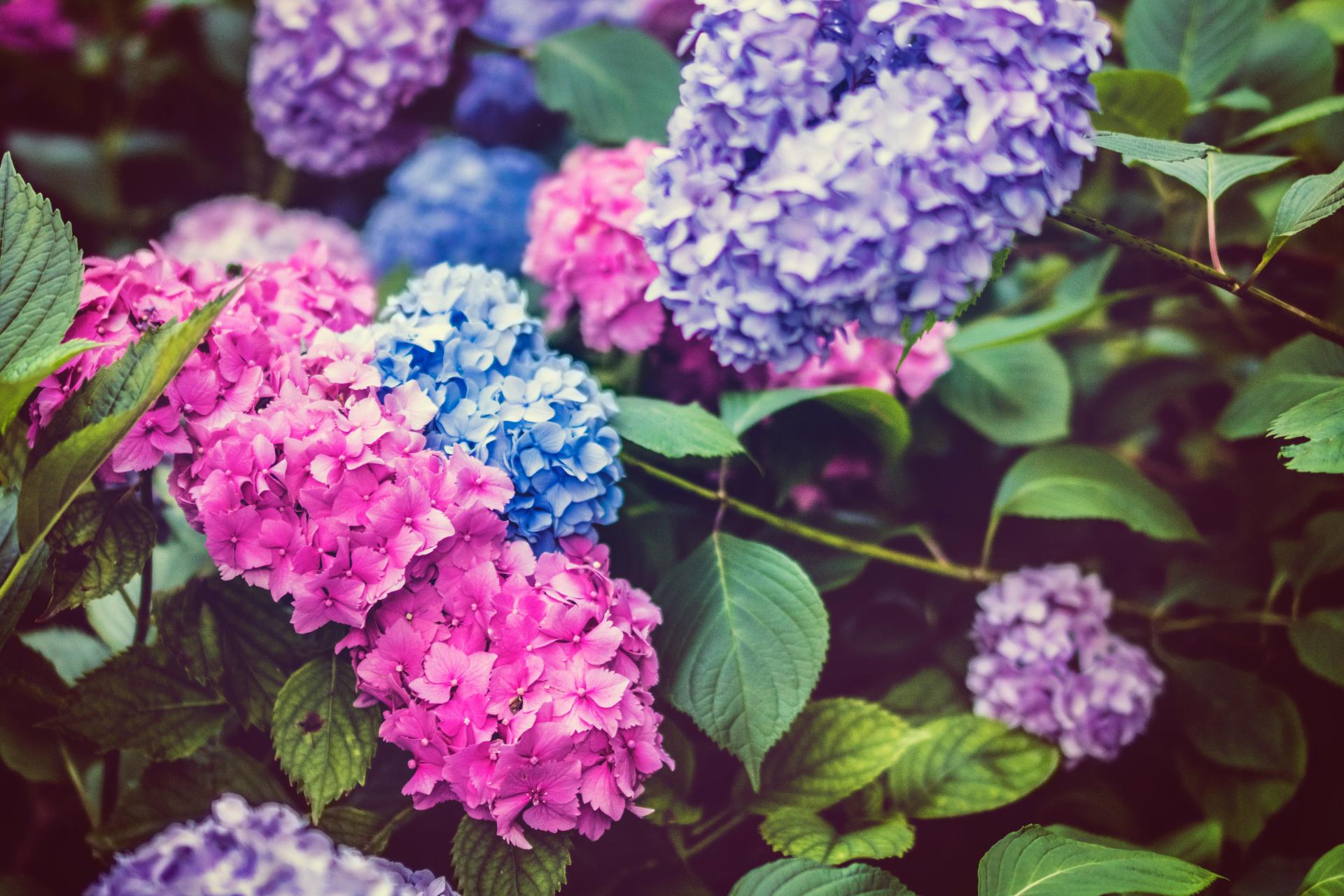
*Colours and soil acidity*
In most species the flowers are white, but in some species (notably H. macrophylla), can be blue, red, pink, light purple, or dark purple. In these species the color is affected by the presence of aluminium ions which are available or tied up depending upon the soil pH. For H. macrophylla and H. serrata cultivars, the flower color can be determined by the relative acidity of the soil: an acidic soil (pH below 7), will have available aluminum ions and typically produce flowers that are blue to purple, whereas an alkaline soil (pH above 7) will tie up aluminum ions and result in pink or red flowers. This is caused by a color change of the flower pigments in the presence of aluminium ions which can be taken up into hyperaccumulating plants. Lowering the pH of potting soils or mixes usually does not change the flower color to blue, because these soils have no aluminum ions. The ability to blue or pink a hydrangea is also influenced by the cultivar. Some plants are selected for their ability to be blued, while others are bred and selected to be red, pink or white. The flower color of most other Hydrangea species is not affected by aluminum and cannot be changed or shifted. Hydrangeas also have a nickname called 'Change Rose'.
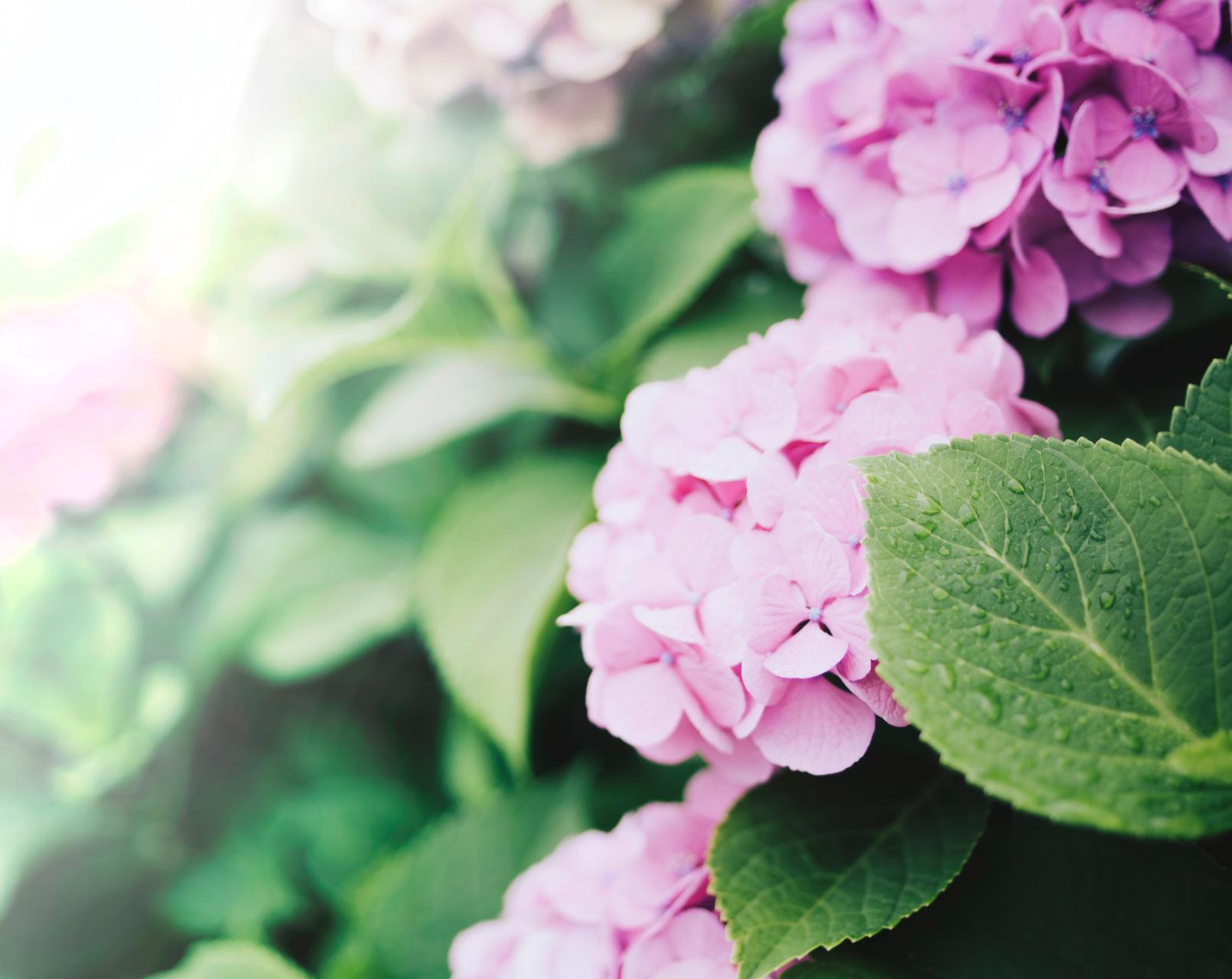
Having been introduced to the Azores, H. macrophylla is now very common, particularly on Faial, which is known as the "blue island" due to the vast number of hydrangeas present on the island.
‘Hydrangea’ is derived from Greek and means ‘water vessel’, which is in reference to the shape of its seed capsules. The earlier name, Hortensia, is a Latinised version of the French given name Hortense, referring to the wife of Jean-André Lepaute.

*In culture*
In Japan, ama-cha,甘茶 meaning sweet tea, is another herbal tea made from Hydrangea serrata, whose leaves contain a substance that develops a sweet taste (phyllodulcin). For the fullest taste, fresh leaves are crumpled, steamed, and dried, yielding dark brown tea leaves. Ama-cha is mainly used for kan-butsu-e (the Buddha bathing ceremony) on April 8 every year—the day thought to be Buddha's birthday in Japan. During the ceremony, Ama-cha is poured over a statue of Buddha and served to people in attendance. A legend has it that on the day Buddha was born, nine dragons poured Amrita over him; ama-cha is substituted for Amrita in Japan.
In Korean tea, Hydrangea serrata (hangul:산수국 hanja:山水菊) is used for an herbal tea called sugukcha (수국차) or ilsulcha (이슬차).
The pink hydrangea has risen in popularity all over the world, but especially in Asia. Pink hydrangeas have many different meanings, but generally mean, "You are the beat of my heart," as described by the celebrated Asian florist Tan Jun Yong, where he was quoted saying, "The light delicate blush of the petals reminds me of a beating heart, while the size could only match the heart of the sender!"
Hydrangea quercifolia was declared the official state wildflower of Alabama in 1999.

*Colours and soil acidity*
In most species the flowers are white, but in some species (notably H. macrophylla), can be blue, red, pink, light purple, or dark purple. In these species the color is affected by the presence of aluminium ions which are available or tied up depending upon the soil pH. For H. macrophylla and H. serrata cultivars, the flower color can be determined by the relative acidity of the soil: an acidic soil (pH below 7), will have available aluminum ions and typically produce flowers that are blue to purple, whereas an alkaline soil (pH above 7) will tie up aluminum ions and result in pink or red flowers. This is caused by a color change of the flower pigments in the presence of aluminium ions which can be taken up into hyperaccumulating plants. Lowering the pH of potting soils or mixes usually does not change the flower color to blue, because these soils have no aluminum ions. The ability to blue or pink a hydrangea is also influenced by the cultivar. Some plants are selected for their ability to be blued, while others are bred and selected to be red, pink or white. The flower color of most other Hydrangea species is not affected by aluminum and cannot be changed or shifted. Hydrangeas also have a nickname called 'Change Rose'.

0
0
文章
ritau
2020年02月19日

Many related plants also share the name "daisy", so to distinguish this species from other daisies it is sometimes qualified as common daisy, lawn daisy or English daisy. Historically, it has also been commonly known as bruisewort and occasionally woundwort (although the common name woundwort is now more closely associated with Stachys). Bellis perennis is native to western, central and northern Europe, but widely naturalised in most temperate regions including the Americas and Australasia.

It is a perennial herbaceous plant with short creeping rhizomes and rosettes of small rounded or spoon-shaped leaves that are from 3/4 to 2 inches (approx. 2-5 cm) long and grow flat to the ground. The species habitually colonises lawns, and is difficult to eradicate by mowing – hence the term 'lawn daisy'. Wherever it appears it is often considered an invasive weed.
The flowerheads are composite, in the form of a pseudanthium, consisting of many sessile flowers about 3/4 to 1-1/4 in (approx. 2-3 cm) in diameter, with white ray florets (often tipped red) and yellow disc florets. Each inflorescence is borne on single leafless stems 3/4 – 4 in (approx. 2-10 cm), rarely 6 in (approx. 15 cm) tall. The capitulum, or disc of florets, is surrounded by two rows of green bracts known as "phyllaries". The achenes are without pappus.
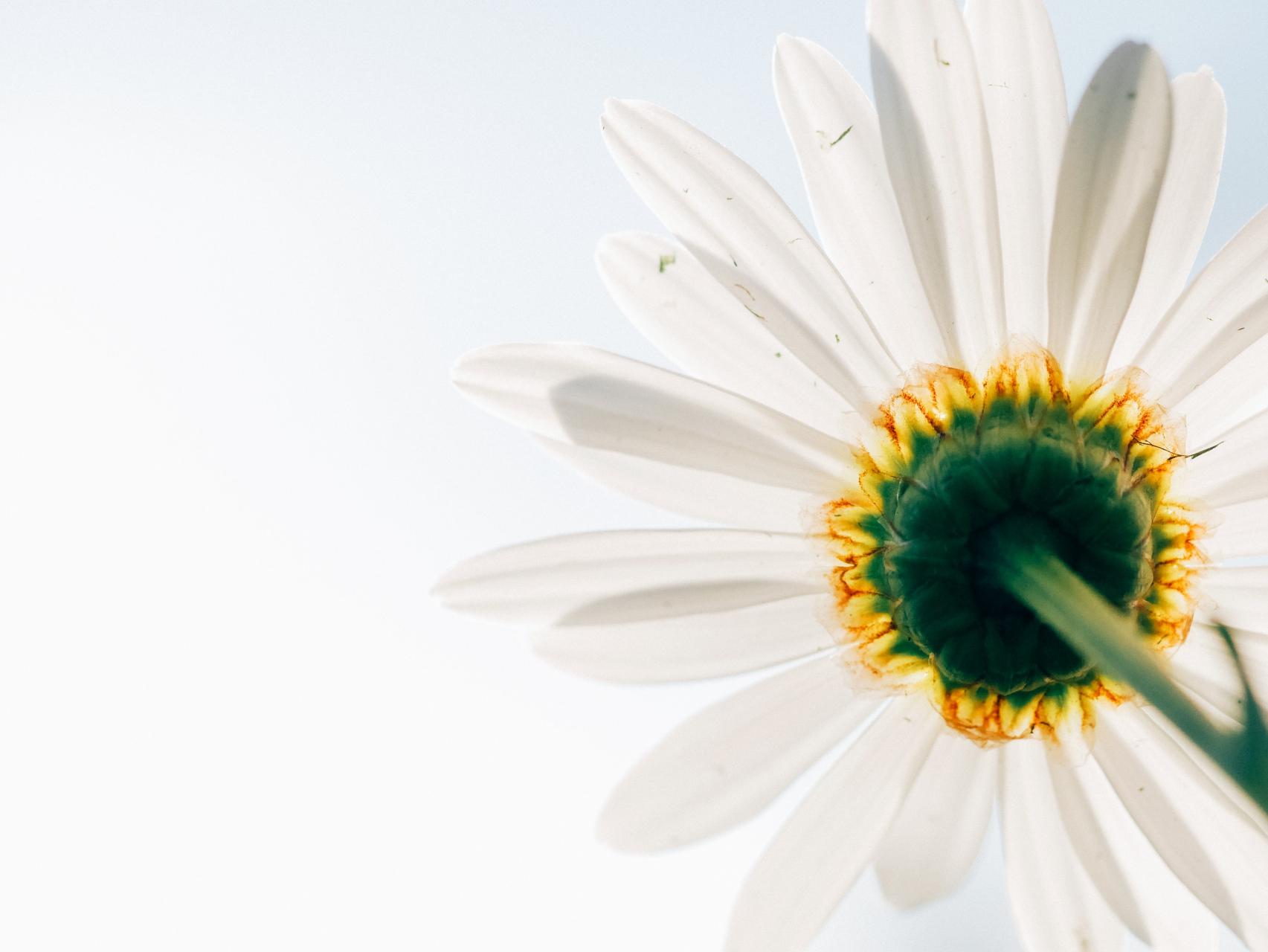
Bellis perennis generally blooms from early to midsummer, although when grown under ideal conditions, it has a very long flowering season and will even produce a few flowers in the middle of mild winters.
It can generally be grown in USDA Zones 4 – 8 (i.e. where minimum temperatures are above −30 °F (−34 °C)) in full sun to partial shade conditions, and requires low or no maintenance. It has no known serious insect or disease problems and can generally be grown in most well-drained soils. The plant may be propagated either by seed after the last frost, or by division after flowering.
Though invasive, the species is still considered a valuable ground cover in certain garden settings (e.g., as part of English or cottage inspired gardens, as well as spring meadows where low growth and some color is desired in parallel with minimal care and maintenance while helping to crowd out noxious weeds once established and naturalised).
Numerous single- and double-flowered varieties are in cultivation, producing flat or spherical blooms in a range of sizes (1 cm to 6 cm) and colours (red, pink & white). They are generally grown from seed as biennial bedding plants. They can also be purchased as plugs in Spring. The cultivar 'Tasso series' has gained the Royal Horticultural Society's Award of Garden Merit.
It has been reported to be mostly self-fertilizing, but some plants may be self-sterile.
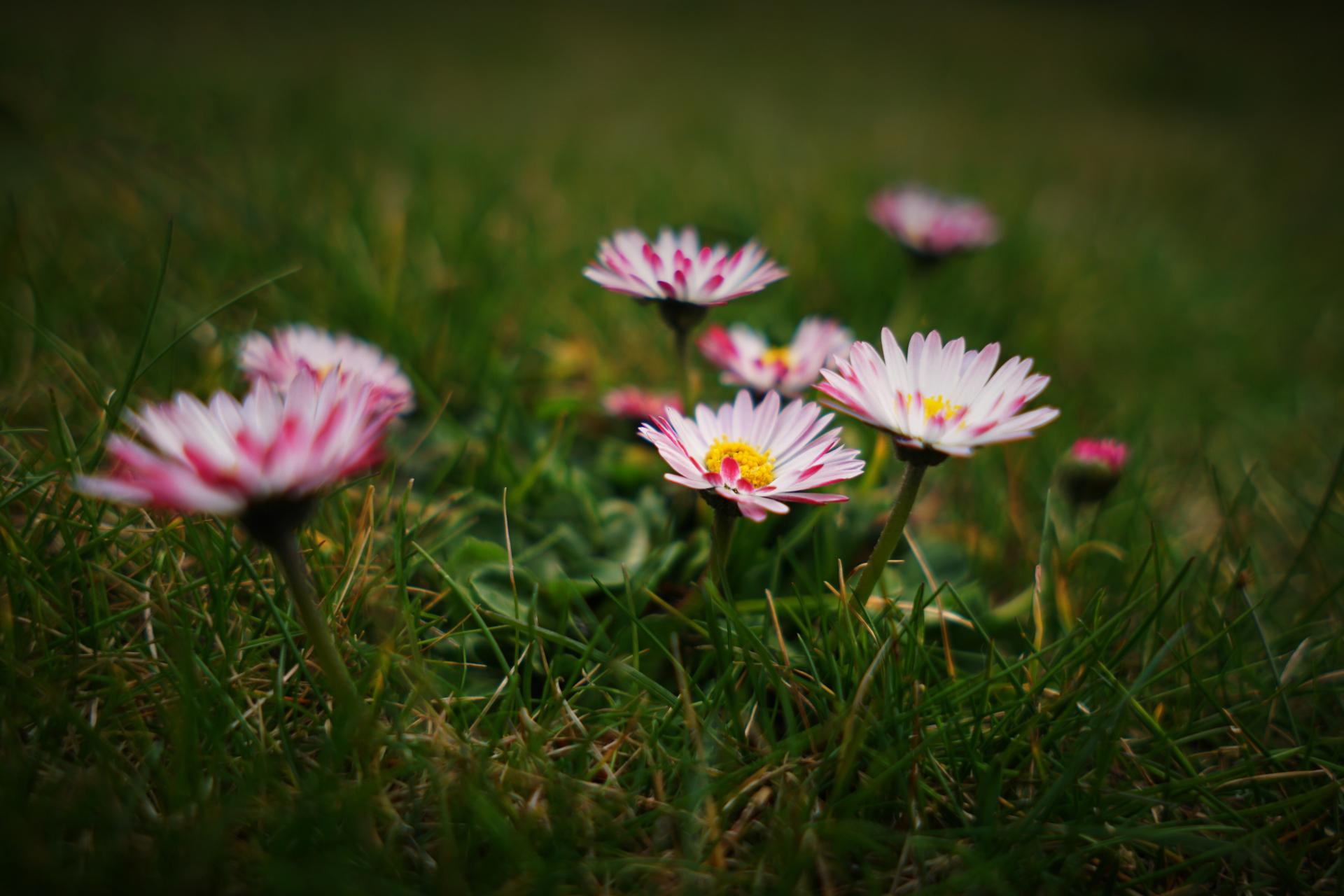

It is a perennial herbaceous plant with short creeping rhizomes and rosettes of small rounded or spoon-shaped leaves that are from 3/4 to 2 inches (approx. 2-5 cm) long and grow flat to the ground. The species habitually colonises lawns, and is difficult to eradicate by mowing – hence the term 'lawn daisy'. Wherever it appears it is often considered an invasive weed.
The flowerheads are composite, in the form of a pseudanthium, consisting of many sessile flowers about 3/4 to 1-1/4 in (approx. 2-3 cm) in diameter, with white ray florets (often tipped red) and yellow disc florets. Each inflorescence is borne on single leafless stems 3/4 – 4 in (approx. 2-10 cm), rarely 6 in (approx. 15 cm) tall. The capitulum, or disc of florets, is surrounded by two rows of green bracts known as "phyllaries". The achenes are without pappus.

Bellis perennis generally blooms from early to midsummer, although when grown under ideal conditions, it has a very long flowering season and will even produce a few flowers in the middle of mild winters.
It can generally be grown in USDA Zones 4 – 8 (i.e. where minimum temperatures are above −30 °F (−34 °C)) in full sun to partial shade conditions, and requires low or no maintenance. It has no known serious insect or disease problems and can generally be grown in most well-drained soils. The plant may be propagated either by seed after the last frost, or by division after flowering.
Though invasive, the species is still considered a valuable ground cover in certain garden settings (e.g., as part of English or cottage inspired gardens, as well as spring meadows where low growth and some color is desired in parallel with minimal care and maintenance while helping to crowd out noxious weeds once established and naturalised).
Numerous single- and double-flowered varieties are in cultivation, producing flat or spherical blooms in a range of sizes (1 cm to 6 cm) and colours (red, pink & white). They are generally grown from seed as biennial bedding plants. They can also be purchased as plugs in Spring. The cultivar 'Tasso series' has gained the Royal Horticultural Society's Award of Garden Merit.
It has been reported to be mostly self-fertilizing, but some plants may be self-sterile.

0
0
文章
ritau
2020年02月18日

Hydroponics is a subset of hydroculture, which is a method of growing plants without soil, by instead using mineral nutrient solutions in a water solvent.Terrestrial plants may be grown with only their roots exposed to the nutritious liquid, or the roots may be physically supported by an inert medium such as perlite, gravel.Despite inert media, roots can cause changes of the rhizosphere pH and root exudates can impact the rhizosphere biology.
The nutrients used in hydroponic systems can come from an array of different sources, including (but not limited to) fish excrement, duck manure, purchased chemical fertilisers, or artificial nutrient solutions.
Plants commonly grown hydroponically on inert media include tomatoes, peppers, cucumbers, lettuces, marijuana, and model plants like Arabidopsis thaliana.
Hydroponics offer many advantages, one of them being a decrease in water usage for agriculture. To grow 1 kilogram of tomatoes in Intensive farming requires 400 liters of water, in hydroponics 70 liters of water, and only 20 liters of water for aeroponics.Because of the lack of water needed to grow produce, it would be possible in the future for harsh environments which don’t have much accessible water, to be able to grow their own food.
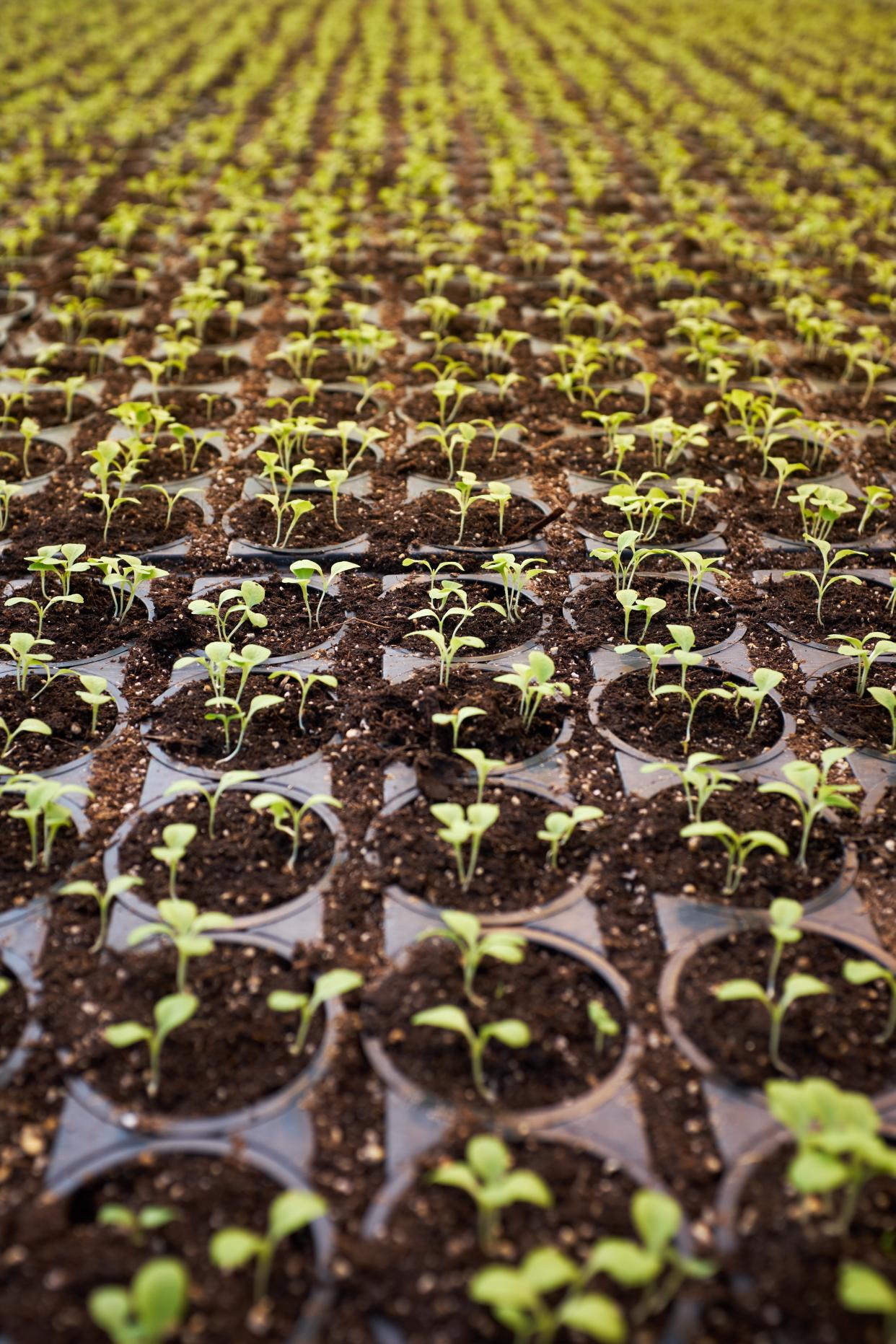
The earliest published work on growing terrestrial plants without soil was the 1627 book Sylva Sylvarum or 'A Natural History' by Francis Bacon, printed a year after his death. Water culture became a popular research technique after that. In 1699, John Woodward published his water culture experiments with spearmint. He found that plants in less-pure water sources grew better than plants in distilled water. By 1842, a list of nine elements believed to be essential for plant growth had been compiled, and the discoveries of German botanists Julius von Sachs and Wilhelm Knop, in the years 1859-1875, resulted in a development of the technique of soilless cultivation.Growth of terrestrial plants without soil in mineral nutrient solutions was called solution culture. It quickly became a standard research and teaching technique and is still widely used. Solution culture is, now considered, a type of hydroponics where there is an inert medium.

The nutrients used in hydroponic systems can come from an array of different sources, including (but not limited to) fish excrement, duck manure, purchased chemical fertilisers, or artificial nutrient solutions.
Plants commonly grown hydroponically on inert media include tomatoes, peppers, cucumbers, lettuces, marijuana, and model plants like Arabidopsis thaliana.
Hydroponics offer many advantages, one of them being a decrease in water usage for agriculture. To grow 1 kilogram of tomatoes in Intensive farming requires 400 liters of water, in hydroponics 70 liters of water, and only 20 liters of water for aeroponics.Because of the lack of water needed to grow produce, it would be possible in the future for harsh environments which don’t have much accessible water, to be able to grow their own food.

The earliest published work on growing terrestrial plants without soil was the 1627 book Sylva Sylvarum or 'A Natural History' by Francis Bacon, printed a year after his death. Water culture became a popular research technique after that. In 1699, John Woodward published his water culture experiments with spearmint. He found that plants in less-pure water sources grew better than plants in distilled water. By 1842, a list of nine elements believed to be essential for plant growth had been compiled, and the discoveries of German botanists Julius von Sachs and Wilhelm Knop, in the years 1859-1875, resulted in a development of the technique of soilless cultivation.Growth of terrestrial plants without soil in mineral nutrient solutions was called solution culture. It quickly became a standard research and teaching technique and is still widely used. Solution culture is, now considered, a type of hydroponics where there is an inert medium.

0
0
文章
ritau
2020年02月10日

Hello everyone, today we are going to talk about how to grow succulent plants.

* Soil
Succulents are suitable for use in soils that are permeable to water and air, dry, sterile and insect-free. A mixture of perlite and coconut bran (1:2) is recommended for most succulents.
*Illumination
When raising succulent plant indoors, place it in the window with sufficient sunshine or balcony aptly.If the summer temperature is too high, you can use a shading net with a 70% shading rate, and avoid 12-15 hours of sun exposure.
*Moisture
The principle of succulent plant watering is to water less and thoroughly,and avoid accumulating water. Spring and fall are the growing seasons for succulents, and the best time to water is when the leaves below begin to dry out. Summer is the dormancy season of succulent plants, mainly by spray watering, keep the surface of the basin soil wet.Water less often in winter.

*Temperature
Succulents are native to South Africa, where the optimum growth temperature is between 12 and 28 degrees Celsius. Therefore, the spring and autumn are the most vigorous seasons for succulents.Make sure the room temperature is above 8 degrees Celsius in winter and below 35 degrees Celsius in summer, and pay attention to ventilation and cooling.
Hope those tips may help you! Enjoying your plant!


* Soil
Succulents are suitable for use in soils that are permeable to water and air, dry, sterile and insect-free. A mixture of perlite and coconut bran (1:2) is recommended for most succulents.
*Illumination
When raising succulent plant indoors, place it in the window with sufficient sunshine or balcony aptly.If the summer temperature is too high, you can use a shading net with a 70% shading rate, and avoid 12-15 hours of sun exposure.
*Moisture
The principle of succulent plant watering is to water less and thoroughly,and avoid accumulating water. Spring and fall are the growing seasons for succulents, and the best time to water is when the leaves below begin to dry out. Summer is the dormancy season of succulent plants, mainly by spray watering, keep the surface of the basin soil wet.Water less often in winter.

*Temperature
Succulents are native to South Africa, where the optimum growth temperature is between 12 and 28 degrees Celsius. Therefore, the spring and autumn are the most vigorous seasons for succulents.Make sure the room temperature is above 8 degrees Celsius in winter and below 35 degrees Celsius in summer, and pay attention to ventilation and cooling.
Hope those tips may help you! Enjoying your plant!

0
0
文章
ritau
2020年02月07日

What is Succulent?

In botany, succulent plants, also known as succulents, are plants with parts that are thickened, fleshy and engorged, usually to retain water in arid climates or soil conditions. The word "succulent" comes from the Latin word sucus, meaning juice, or sap.Succulent plants may store water in various structures, such as leaves and stems. Some definitions also include roots, thus geophytes that survive unfavorable periods by dying back to underground storage organs may be regarded as succulents. In horticultural use, the term "succulent" is sometimes used in a way which excludes plants that botanists would regard as succulents, such as cacti. Succulents are often grown as ornamental plants because of their striking and unusual appearance, as well as their ability to thrive with relatively minimal care.
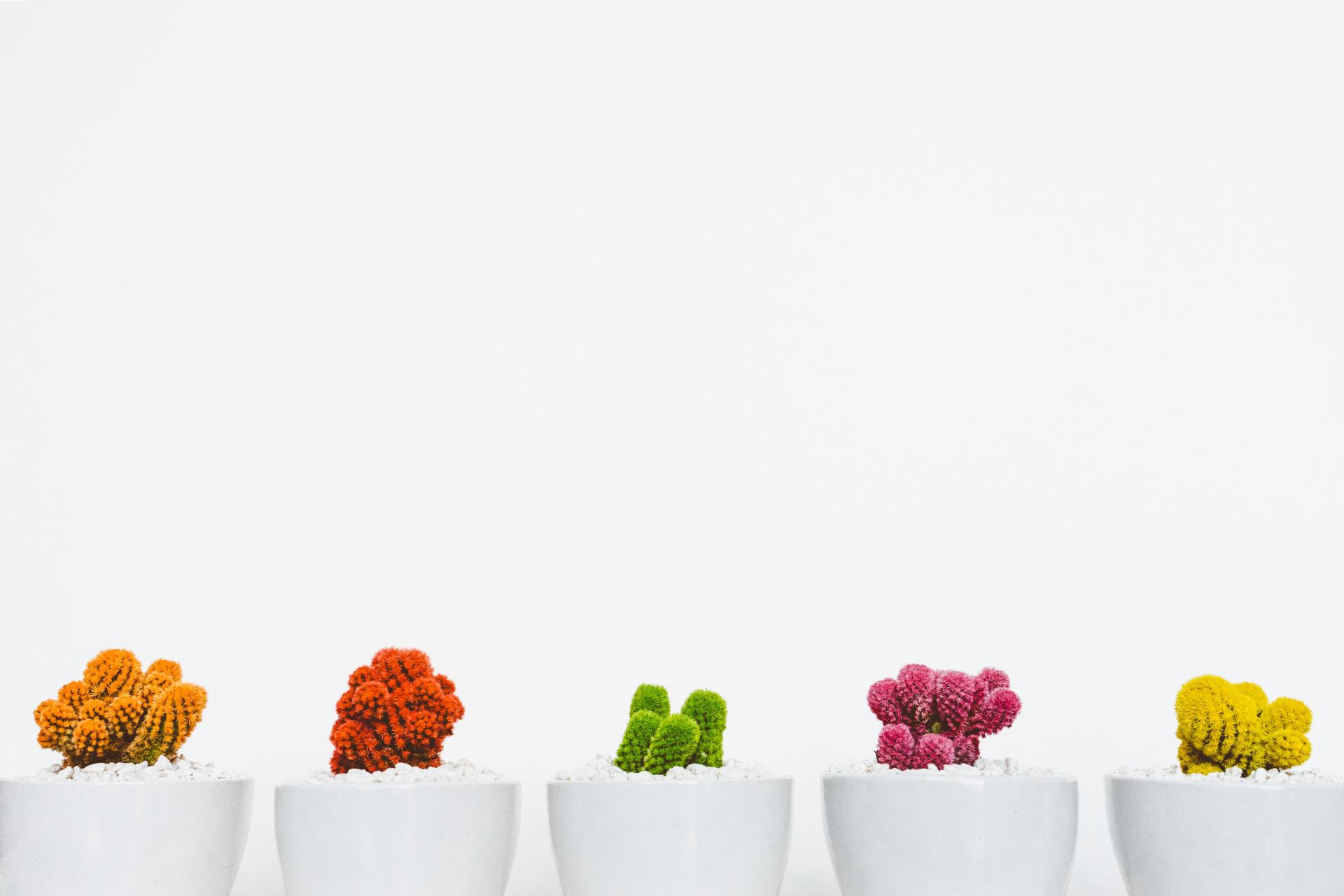
Many plant families have multiple succulents found within them (over 25 plant families).In some families, such as Aizoaceae, Cactaceae, and Crassulaceae, most species are succulents. The habitats of these water preserving plants are often in areas with high temperatures and low rainfall, such as deserts. Succulents have the ability to thrive on limited water sources, such as mist and dew, which makes them equipped to survive in an ecosystem which contains scarce water sources.

In next part, we are going to discuss on how to plant succulent!

In botany, succulent plants, also known as succulents, are plants with parts that are thickened, fleshy and engorged, usually to retain water in arid climates or soil conditions. The word "succulent" comes from the Latin word sucus, meaning juice, or sap.Succulent plants may store water in various structures, such as leaves and stems. Some definitions also include roots, thus geophytes that survive unfavorable periods by dying back to underground storage organs may be regarded as succulents. In horticultural use, the term "succulent" is sometimes used in a way which excludes plants that botanists would regard as succulents, such as cacti. Succulents are often grown as ornamental plants because of their striking and unusual appearance, as well as their ability to thrive with relatively minimal care.

Many plant families have multiple succulents found within them (over 25 plant families).In some families, such as Aizoaceae, Cactaceae, and Crassulaceae, most species are succulents. The habitats of these water preserving plants are often in areas with high temperatures and low rainfall, such as deserts. Succulents have the ability to thrive on limited water sources, such as mist and dew, which makes them equipped to survive in an ecosystem which contains scarce water sources.

In next part, we are going to discuss on how to plant succulent!
0
0
文章
A🎌王木木💮
2019年11月28日

Now it’s the month of Scorpio.In the next few issues,we’ll introduce the plants suitable for Scorpio.Today we’re going to introduce the first one--Paeonia suffruticosa
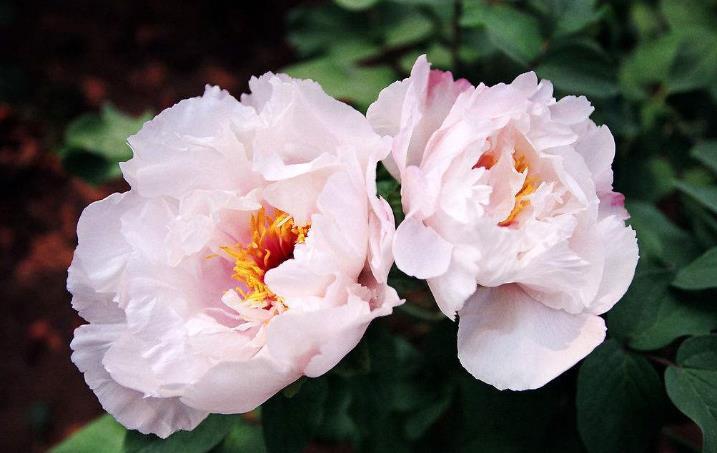
Other common names:
peony 'Rimpo'
SynonymsPaeonia × suffruticosa Bird of Rimpo
Paeonia × suffruticosa 'Bird of Rimpo'
Family:Paeoniaceae
Genus:Paeonia may be herbaceous perennials or deciduous sub-shrubs with large, divided leaves and showy large bowl-shaped flowers, usually in early summer
Details:'Rimpo' is a shrub, 1.2m high, with rigid upright stems, slightly glaucous green leaves, and spicily fragrant, semi-double flowers, up to 24cm across, which have purplish red petals, cream stigmas, and yellow anthers, in late spring or early summer
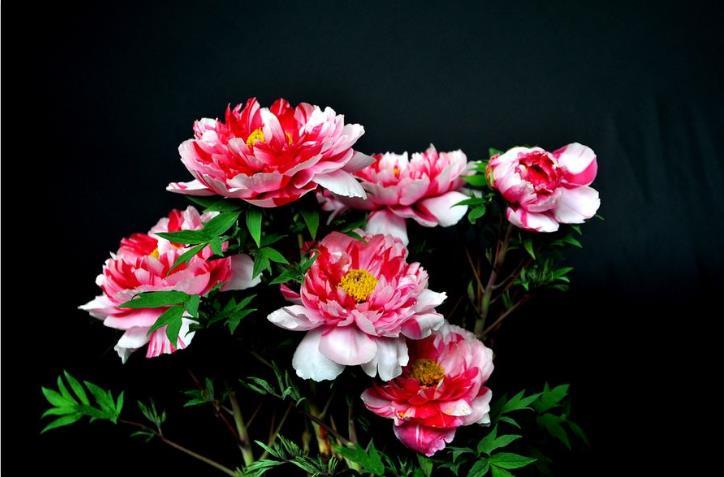
How to grow
Cultivation Grow in deep, fertile, humus-rich, moist but well-drained soil in full sun or partial shade, in an open position but with shelter from cold, drying winds; for more advice, see tree peony cultivation
Propagation Propagate by semi-ripe cuttings in summer, or by grafting in winter
Suggested planting locations and garden types Flower borders and beds Wall-side Borders Cut Flowers Low Maintenance Cottage & Informal Garden City & Courtyard Gardens
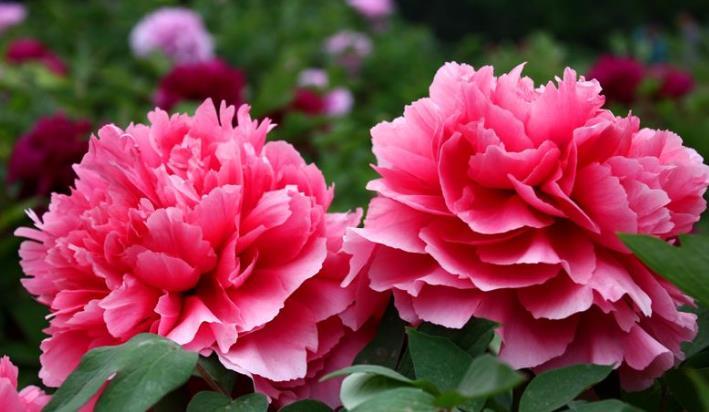
How to care
PruningPruning group 1 (little or no pruning of trees and shrubs)
Pests can be affected by leaf and bud eelworm and soil-dwelling swift moth larvae
Diseases May be affected by virus diseases, honey fungus, peony wilt, and fungal leaf spot

Other common names:
peony 'Rimpo'
SynonymsPaeonia × suffruticosa Bird of Rimpo
Paeonia × suffruticosa 'Bird of Rimpo'
Family:Paeoniaceae
Genus:Paeonia may be herbaceous perennials or deciduous sub-shrubs with large, divided leaves and showy large bowl-shaped flowers, usually in early summer
Details:'Rimpo' is a shrub, 1.2m high, with rigid upright stems, slightly glaucous green leaves, and spicily fragrant, semi-double flowers, up to 24cm across, which have purplish red petals, cream stigmas, and yellow anthers, in late spring or early summer

How to grow
Cultivation Grow in deep, fertile, humus-rich, moist but well-drained soil in full sun or partial shade, in an open position but with shelter from cold, drying winds; for more advice, see tree peony cultivation
Propagation Propagate by semi-ripe cuttings in summer, or by grafting in winter
Suggested planting locations and garden types Flower borders and beds Wall-side Borders Cut Flowers Low Maintenance Cottage & Informal Garden City & Courtyard Gardens

How to care
PruningPruning group 1 (little or no pruning of trees and shrubs)
Pests can be affected by leaf and bud eelworm and soil-dwelling swift moth larvae
Diseases May be affected by virus diseases, honey fungus, peony wilt, and fungal leaf spot
0
0
文章
A🎌王木木💮
2019年11月18日

After entering the winter,the outside world is getting more and more depressed.If you’re a florist,you can raise some flowers and plants at home,let the space that belongs to you be full of spring.What flowers and plants are suitable for raising in winter?Today we introduce hyacinth.
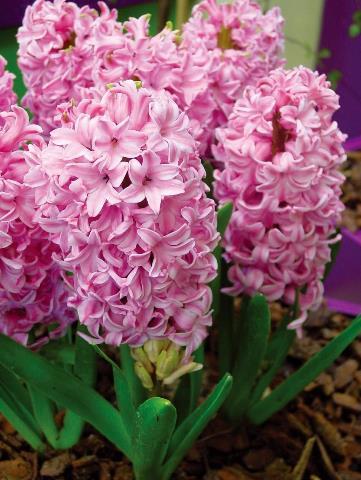
Other common names:hyacinth 'Woodstock'
Family:Asparagaceae
Genus:Hyacinthus are bulbous perennial with glossy, broadly strap-shaped leaves and fragrant, bell-shaped flowers with recurved petals, borne in loose or dense racemes in spring
Details:'Woodstock' is a perennial bulb, growing to 30cm tall, with rich green, glossy, upright foliage and spikes of plum-purple, scented flowers on black-purple stems in mid-spring
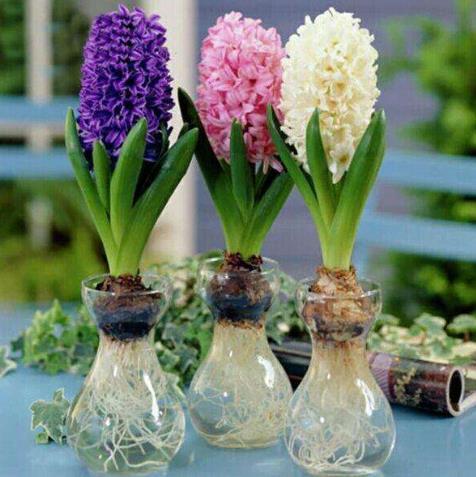
How to grow
Cultivation Plant 10cm deep in autumn in any moderately fertile, humus-rich, well-drained soil. Protect container-grown bulbs from excessive winter wet. See hyacinth cultivation
Propagation Propagate by removing offsets when dormant in summer
Suggested planting locations and garden types Flower borders and beds City & Courtyard Gardens Cottage & Informal Garden Mediterranean Climate Plants Patio & Container Plants

How to care
Pruning No pruning required
Pests Can be damaged by slugs
Diseases Generally disease free

Other common names:hyacinth 'Woodstock'
Family:Asparagaceae
Genus:Hyacinthus are bulbous perennial with glossy, broadly strap-shaped leaves and fragrant, bell-shaped flowers with recurved petals, borne in loose or dense racemes in spring
Details:'Woodstock' is a perennial bulb, growing to 30cm tall, with rich green, glossy, upright foliage and spikes of plum-purple, scented flowers on black-purple stems in mid-spring

How to grow
Cultivation Plant 10cm deep in autumn in any moderately fertile, humus-rich, well-drained soil. Protect container-grown bulbs from excessive winter wet. See hyacinth cultivation
Propagation Propagate by removing offsets when dormant in summer
Suggested planting locations and garden types Flower borders and beds City & Courtyard Gardens Cottage & Informal Garden Mediterranean Climate Plants Patio & Container Plants

How to care
Pruning No pruning required
Pests Can be damaged by slugs
Diseases Generally disease free
0
0
文章
A🎌王木木💮
2019年11月13日

Heralds of spring, these little bulbs are among the first plants to flower in the new year. Planted in generous drifts, they are sturdier than they look, even pushing up their heads above a carpet of snow.
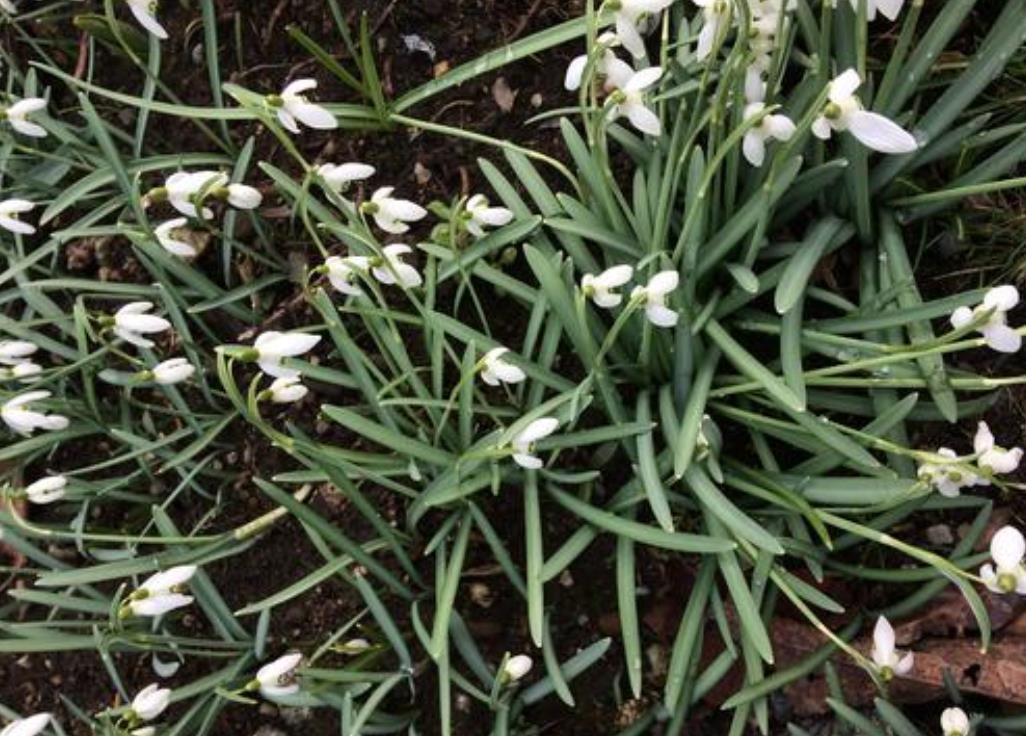
Botanical name: Galanthus
Family:Amaryllidaceae
Genus:Galanthus are dwarf bulbous perennials with linear or strap-shaped leaves, and solitary, often honey-scented, nodding flowers with 3 white outer tepals and 3 smaller inner ones often marked with green
Details:'Sentinel' is a clump-forming, bulbous perennial with grey-green leaves and large, mid-season flowers borne on upright stems to 16cm tall. Flowers have white, ridged outer petals and inner petals marked top and bottom with well-defined zones of green
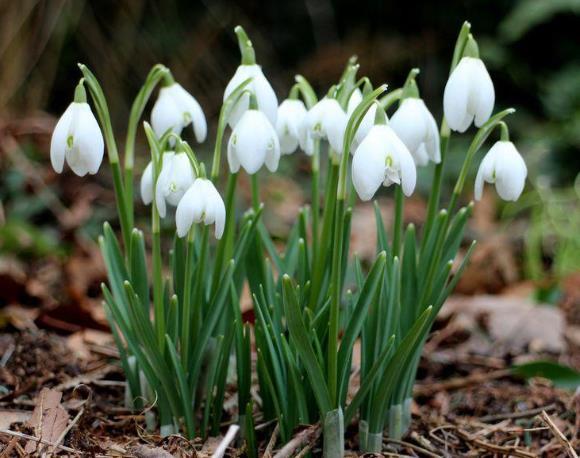
How to grow:
Cultivation Grow in humus-rich, moist but well-drained soil that does not dry out in summer, in sun or partial shade. See snowdrop cultivation
Propagation Propagate by division when foliage dies back
Suggested planting locations and garden types Banks and Slopes Flower borders and beds Garden Edging Low Maintenance Underplanting of Roses and Shrubs City & Courtyard Gardens Cottage & Informal Garden Patio & Container Plants Rock Garden
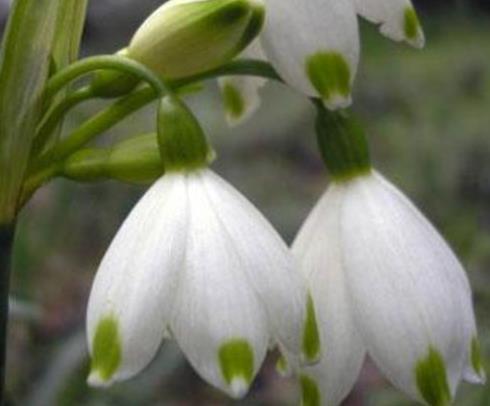
How to care:
Pruning No pruning required
Pests May be attacked by narcissus bulb fly
Diseases May be subject to snowdrop grey mould

Botanical name: Galanthus
Family:Amaryllidaceae
Genus:Galanthus are dwarf bulbous perennials with linear or strap-shaped leaves, and solitary, often honey-scented, nodding flowers with 3 white outer tepals and 3 smaller inner ones often marked with green
Details:'Sentinel' is a clump-forming, bulbous perennial with grey-green leaves and large, mid-season flowers borne on upright stems to 16cm tall. Flowers have white, ridged outer petals and inner petals marked top and bottom with well-defined zones of green

How to grow:
Cultivation Grow in humus-rich, moist but well-drained soil that does not dry out in summer, in sun or partial shade. See snowdrop cultivation
Propagation Propagate by division when foliage dies back
Suggested planting locations and garden types Banks and Slopes Flower borders and beds Garden Edging Low Maintenance Underplanting of Roses and Shrubs City & Courtyard Gardens Cottage & Informal Garden Patio & Container Plants Rock Garden

How to care:
Pruning No pruning required
Pests May be attacked by narcissus bulb fly
Diseases May be subject to snowdrop grey mould
2
0
求助
Yolanda Garza
2019年05月13日

identifying plants.


0
1
Yolanda Garza:@kensong Id: Graham's Nipple Cactus. 🤗😊
kensong:Looks like mine. I also want to know the ID.



